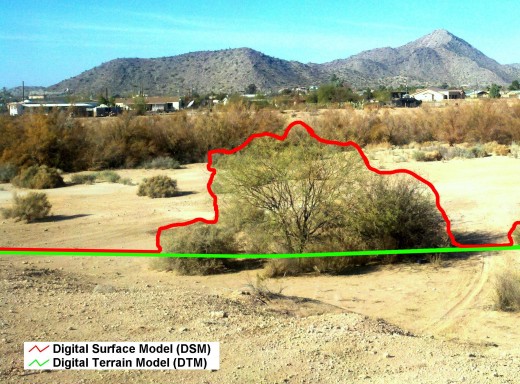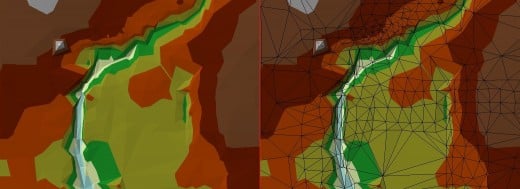Digital Elevation Models and Methods for Representing the Surface of the Earth

Many of today's GIS technologies and analytical methods rely on an accurate base of elevation data to create reliable results. Whether you're predicting future weather patterns, the probable spread of a wildfire, or computing floodplain hydraulics, a good digital elevation model is always a key component of your analysis. So what are digital elevation models, how do they function, and what methods are used to capture the information they represent?
What are Digital Elevation Models (DEMs)?
Digital elevation models are computer representations of the surface of the earth. A true DEM affords the user the ability to obtain elevation information continuously at any point in the data. DEM’s are divided into two subcategories known as Digital Terrain Models (DTM) and Digital Surface Models (DSM).
A DSM is typically raw or slightly processed elevation information about the earth’s surface. The data represents all of the surfaces that can be seen from the sky. This includes the top elevations of all the plants and buildings on the ground . Because of this, DSMs are generally cheaper to obtain and really only have some limited practical uses.

Digital terrain models are sets of data that represent the earths bare ground surface. All of the buildings, trees, and other structures are removed from data. Often times DTMs are created by executing complex computer algorithms to remove structures, vegetation and other anomalies. However this process has not been perfected and often times there can be errors in the accuracy of the elevation information. Care should be taken by the end user if a DTM has been created using these methods. The best DTMs are created using a combination of remote sensing techniques and manual (human) quality control. This also makes them more expensive to purchase.
How are DEMs Stored and Represented?
There are two main ways that digital elevation models are stored and represented in a GIS environment. The first method is a raster format. Rasters can store data in a grid pattern. The grid is formed by rows and columns of pixels. Each pixel represents the location and elevation of that particular spot on the ground. The width of the pixel represents the accuracy of the elevation model. There are two big advantages of rasters: 1) they enable you to have continuous and accurate data and 2) they can be easily converted to any other data format such as TINs and contour lines. The disadvantage of raster formats is that they tend to require large amounts of disk space and can significantly slow down some of the analytical computations in a GIS application.
The second way that DEMs can be stored and represented is through a triangulated irregular network or TIN. TINs are made of a series of triangles whose vertices represent three dimensional coordinates of the earth’s surface. The vertices, or nodes, are joined together by lines that form the edges of the triangles. TINs are great because they are easy to work with and don’t require a lot of disk space.

How are DEMs Created in the First Place?
There are actually quite a bit of methods by which the data needed to create DEMs are acquired. Because this can be quite a lengthy discussion as it is, I will only focus on the three most common DEM creations methods.
Photogrammetry – This is one of the oldest methods for generating large amounts of accurate elevation data. Much like having a pair eyes can allow us to perceive distance and depth, multiple aerial photographs can be analyzed and transformed into a three dimensional surface. Before LIDAR was invented, this was the most common method used to creating DEMs.
LIDAR – LIDAR stands for Light Detection and Ranging and works in a similar fashion that typical RADAR and SONAR devices do. Airplanes flying above the ground utilize LIDAR technology to determine surface profiles by calculating how long it takes light energy to travel to and from the device. After the flight is complete, the data undergoes post-processing where it is edited and converted to a useable file format.
Ground Survey – Ground elevation surveying using GPS and theodolites will probably give you the most accurate representation of the earth’s surface out of any other available method. The major downside to this method of DEM creation is that it is very expensive and requires a lot of time to complete. It also cannot practically be done on a large scale. As a side note, ground survey methods typically do not result in a continuous set of data, thus, they result is not a true digital elevation model.



